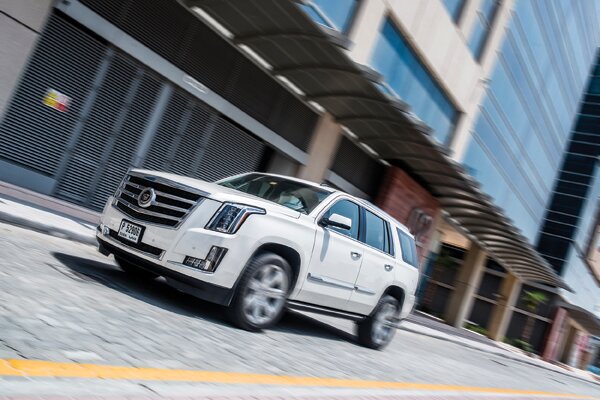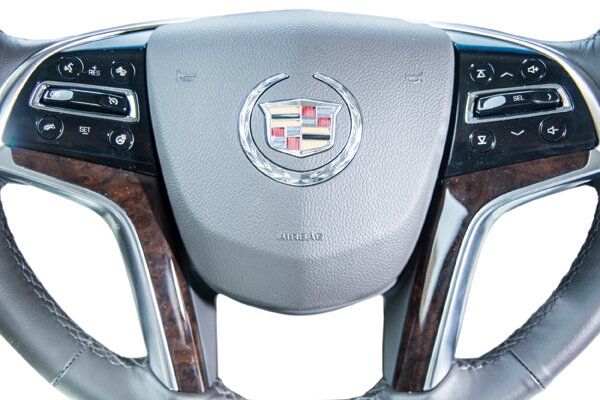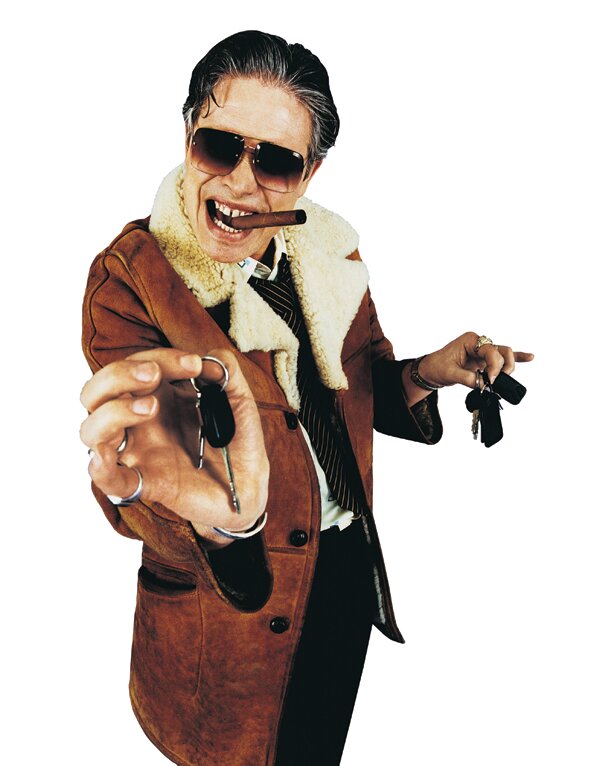The Escalade certainly stacks up well against the competition: Nissan Patrol, Lexus LX 570 and the Infiniti QX 56.
One thing that is quite apparent is that the Japanese models take one drivetrain, rebadge and make some subtle changes. Look harder though and you realise that General Motors is doing the same with Cadillac, Chevrolet Suburban, Tahoe and GMC Yukon.
So what is the difference? Well, apart from subtle body and interior changes, not too much. For most, it will be a badge or features upgrade – and in the case of Cadillac, it’s the prestige brand of General Motors and a style statement.
Style
Since its debut in 1999 the Escalade has slowly sharpened up the looks and in this case also fed itself whey protein supplements! The Escalade has grown slightly and the imposing appearance has stuck with it.
options and technology
The first notable bit of tech is the 12.3inch TFT odometer display – no dials, but a screen. When you start the car it has a Star Trek-like display as it sets itself up and will then show many of the functions that correlate with the information computer alongside the regular speedometer and rev counter.
Not everything is perfect though. The infotainment centre and the steering wheel controls are not most intuitive on the market and many drivers will take a while to adapt to it.
visibility and space
Visibility for all occupants is great and from the driver’s perspective the all-round view is clear too. Blind spots are minimal even though Cadillac has reduced the size of the side mirrors. The only drawback will be the third row of seats, which are rather low to the floor, meaning that the children will probably be the only ones who can enjoy a comfortable ride.
Interior materials
Climb into the Escalade on the automatic roll out side steps and you may be surprised when you sit down. Cadillac has improved this interior immensely. Handcrafted leather and faux suede wrapped furniture decorates your view alongside small panels of wood veneer, all with a rather good finish.
Drive Performance
Cadillac has put in a new 6.2 litre direct injected V8 with 420bhp and has paired it with a six-speed transmission. According to Cadillac, the car will hit 100kph in just short of six seconds. In truth we believe they had a downhill slope to get that. When we test-drove the Escalade, we tried a couple of times to break 6 seconds and could not get past seven. The first attempt was 8.2 seconds and on the final attempt we managed a mere 7.2, which was only made possible by turning off the traction control.
We found the Escalade wants to think about things first: put your foot to the floor and the car takes a second to understand that you want speed. There is plenty that could be done to reduce the weight of this mammoth SUV that would improve on these points.
Handling and suspension
This is one of the largest vehicles on the road but one that still refines old ways. The Escalade is not so comfortable being thrown about; it feels secure and poised but if too aggressive with the corners the car will lean quite a bit. This car is no doubt a cruiser.
Safety Features
Safety on this car is very much the same as most cars coming off the production lines at the minute: traction control, stability control, airbags all around, adaptive cruise control with collision warnings, an so on.
However, as with every car manufacturer, there is always something new that can be added to the package and Cadillac is no different. The Escalade has the addition of front centre airbags, which protect the driver in a side collision.
The verdict
This is the best of the Escalades by far: more handsome than its rivals and boasting an elegantly appointed interior but fighting some antiquated technology under the skin. One thing is for sure: Cadillac is not going to be ignored.
Navigating the used car market
So you’ve seen a good deal on a used car? Be very careful. Many dealers around the GCC buy junk or scrap cars from US and other markets. These are repaired by cheap mechanics in small and unprofessional garages, after which they are sold to the unsuspecting customer at a “bargain” price.
The result: someone who has limited knowledge of cars could end up paying heavy repair charges or maybe even getting into dangerous accidents. Here are our top seven tips to avoid used car scams.
1. Consider the dealer’s reputation
When buying a used car, we advise using reputable dealers, especially those that can offer certified pre-owned cars. While not perfect, these are still more reliable than anything purchased from a dealer who can offer no warranties or assurances on the car. All major dealers have either launched pre-owned programmes or are in the process of doing so. Approaching them might mean paying a bit more, but at least there will be some peace of mind with respect to potential damages.
2. Investigate the car’s history
Always investigate the history of the car being sold as much as possible – especially cars that have American specifications. In many cases, these cars still have their Vehicle Identification Number (VIN) printed on the dashboard. You can run a quick online VIN check using CarFax.com. Also, look for other clues about the car’s origins – stickers on the car might tell you the original dealer, or if you’re lucky the original registration documents might still be in the car.
3. Be careful with imports
Last year many cars imported here from the US to turned out to have been damaged by Hurricane Sandy. This photo above shows a 2013 Honda Pilot Touring that was imported to Jebel Ali and sent to Awir Auto Market in Fujairah. From the outside, it seems ok; but removing the seats shows an alarming amount of rust and water damage. Such a car will often be taken to a workshop in Sharjah, made to look brand new, and then sold at a hefty discount. The unsuspecting customer may think it’s a bargain. In reality, they will be buying a car that has been written off by insurance companies and banks in the US.
4. Go for an inspection
Always get the car inspected by a trustworthy mechanic. Check for body frame damage, rust removal jobs or recent electronic repairs. Be very suspicious if there is frame damage to the car, and never buy a car with any kind of damage to the chassis – it will not normally survive the annual registration inspection.
5. Check market value
If you live in Dubai or Sharjah, you can use Tasjeel, a registered partner of the Roads & Transport Authority (RTA). Tasjeel stations allow you to get a full evaluation of the car to find out its market value. This way you can check if the seller is actually pricing the car higher or lower than the market rate. Other ways to check vehicle market value is to go to a classifieds website such as YallaMotor.com and search similar models with similar mileage; find the average price quoted and you’ll have a fair idea of the market value.
6. Keep resale value in mind
American-specification cars in the GCC region generally sell at much lower prices, which means their resale value is also much lower. A GCC-specification model will have a higher price but also a higher resale value because it’s easier to find the service history and because it will have GCC-specific features like additional filters. A car that turns out to be “flood damaged” or “accidental” will likely have no real resale value. Hence it’s important to realise that while it may be a more affordable option now, the eventual costs might exceed the cost of an original car.
7. Avoid ‘hot deals’
Be suspicious of hot deals at below-market prices. If the price of a used car is too good to be true, it probably is!
Our contributor: James Hutchinson
For more car reviews check out: www.yallamotor.com

























